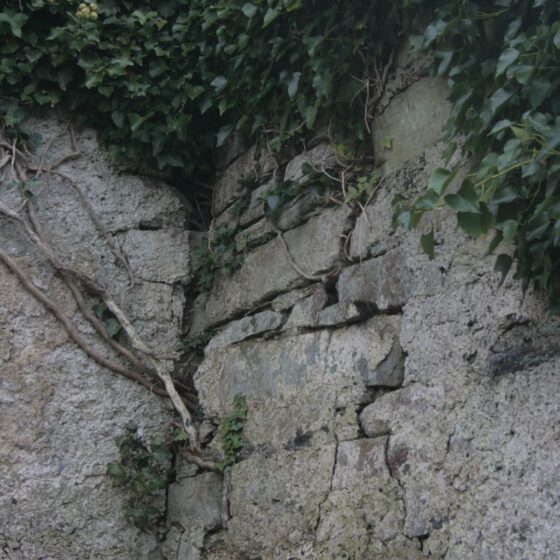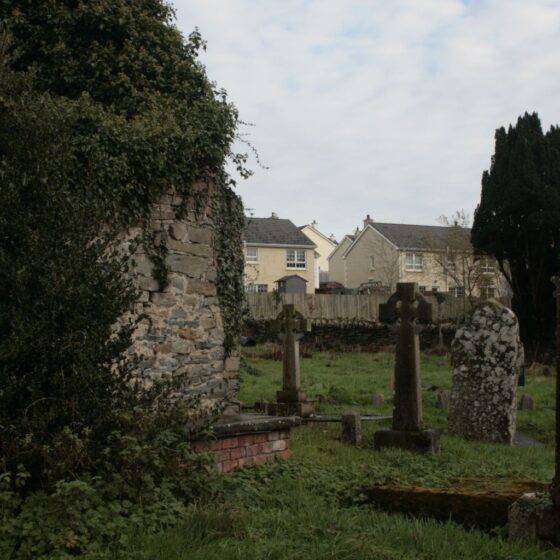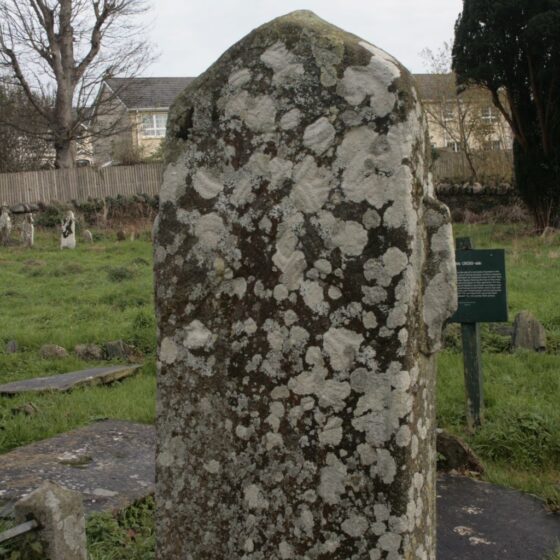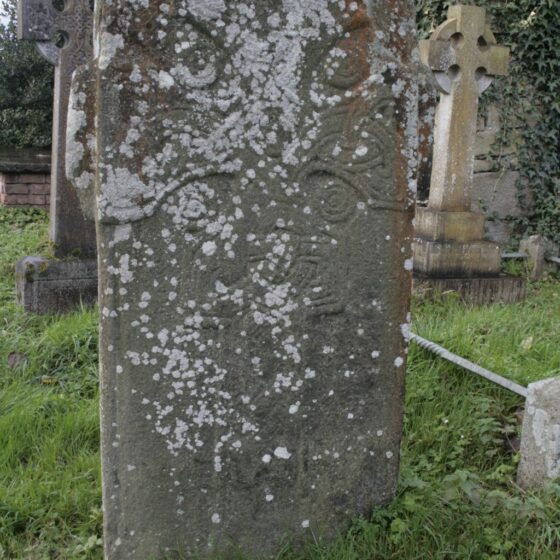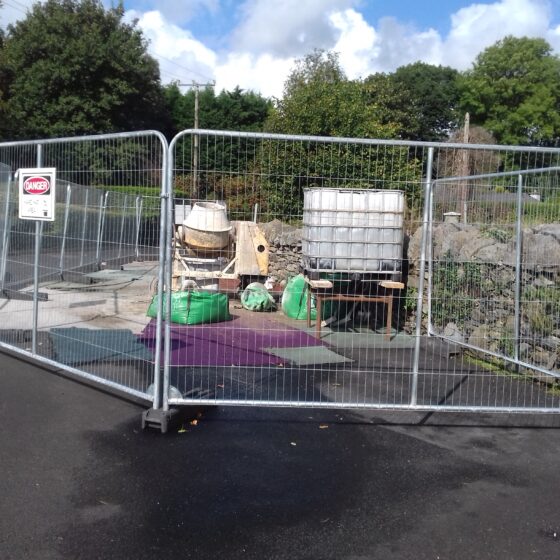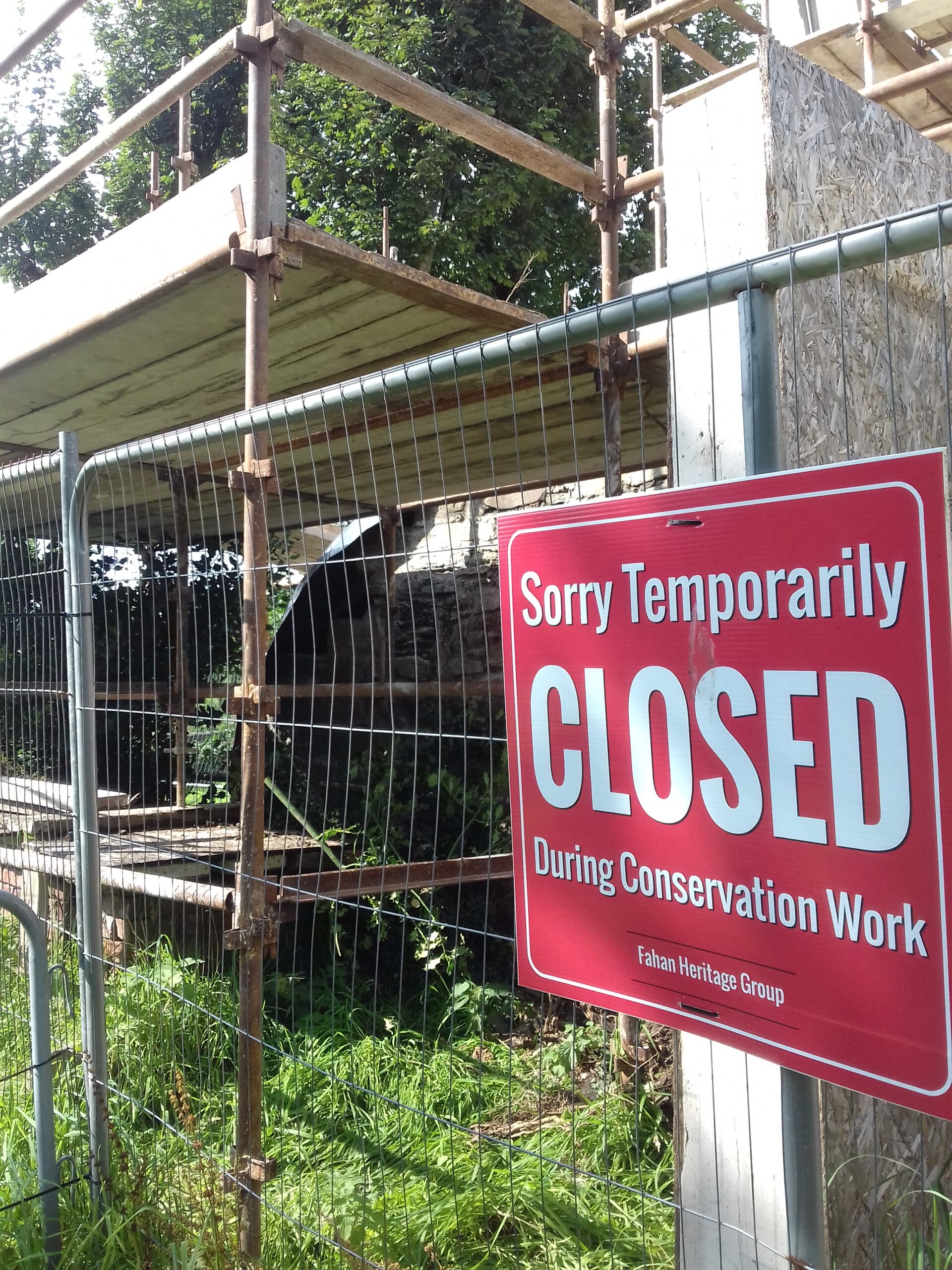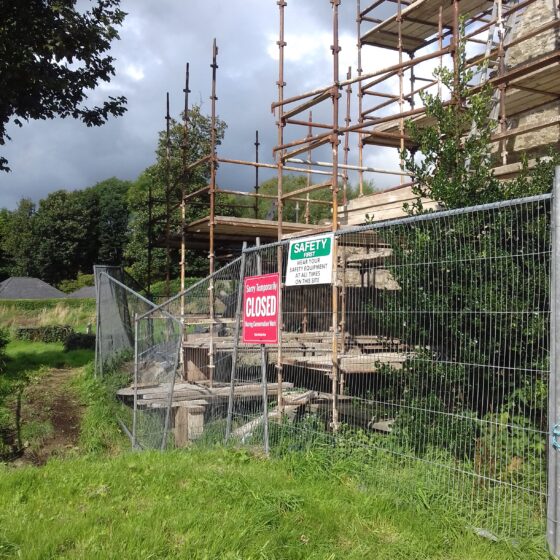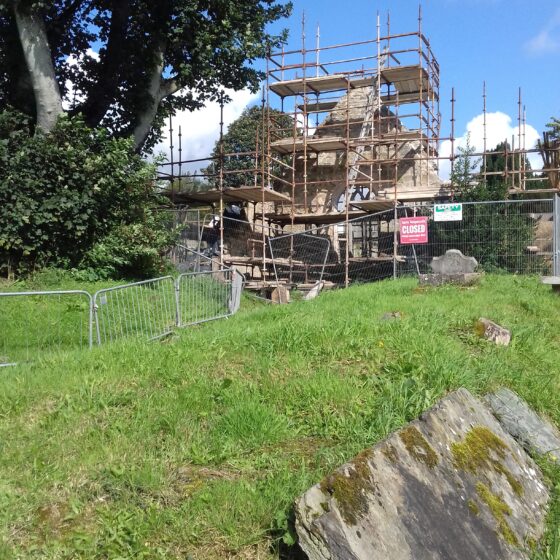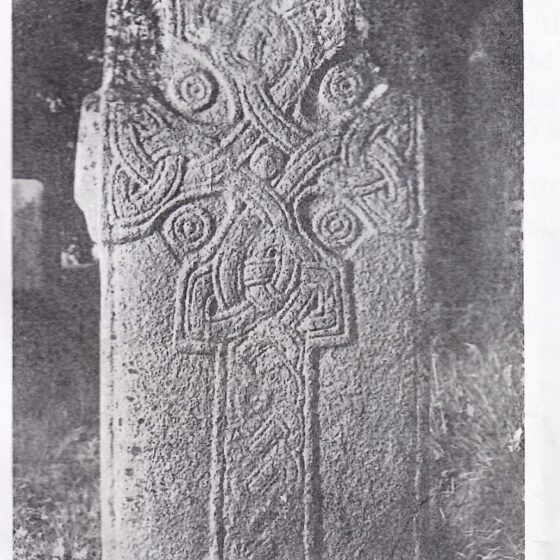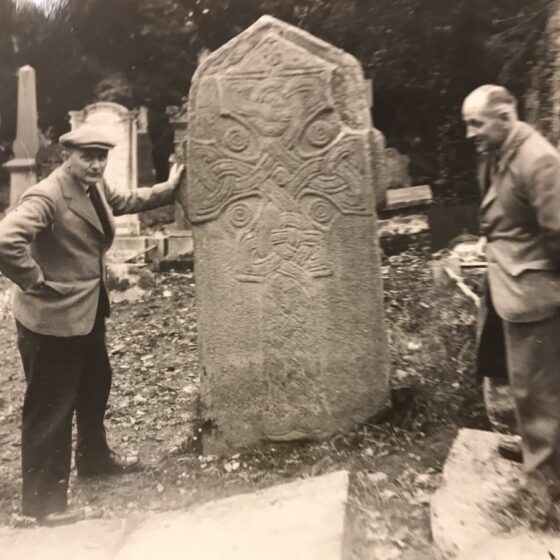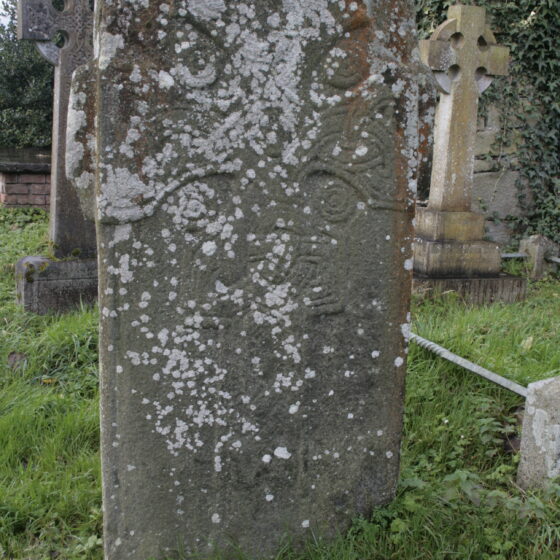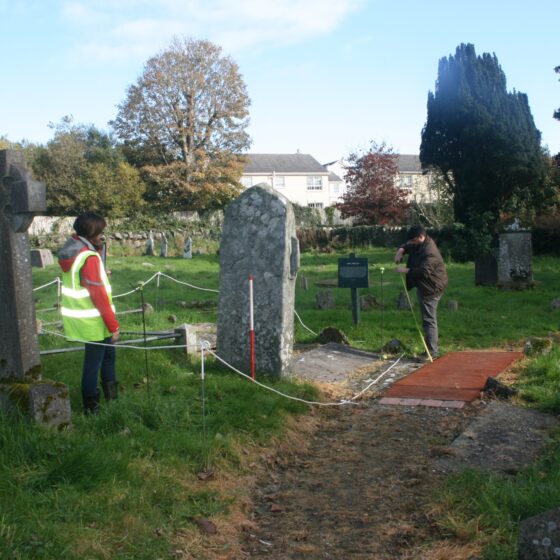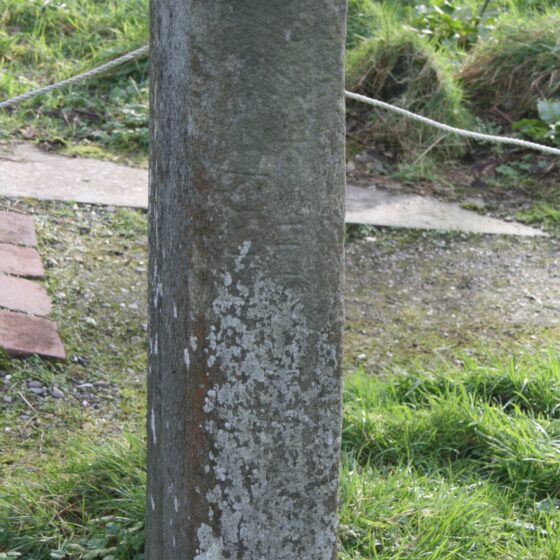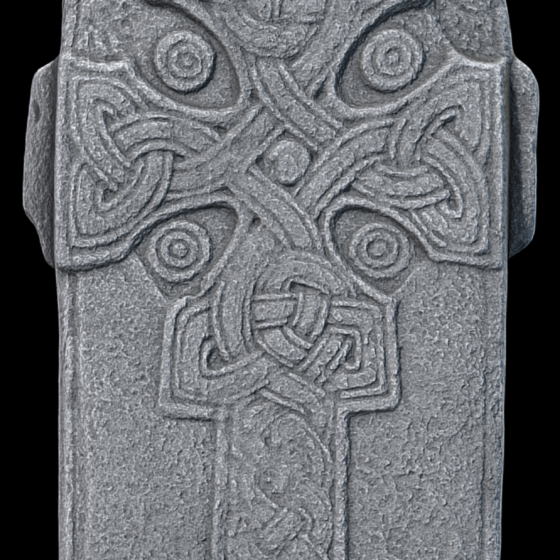The Conservation of Saint Mura’s Cross Fahan
Saint Mura’s Cross-slab is one of the earliest and most important early Christian stone monuments in Donegal. The additional Greek inscription makes it unique among early Christian monuments in Ireland
The early ecclesiastical site of Fahan-Mura is located adjacent the R238 in Fahan village, within a post-medieval graveyard that also contains the 7th – 10th century carved St. Mura’s Cross Slab and is likely to also contain early Christian burial remains. A bend in the road at this location to the north and west, may also represent the elements of a fossilised enclosure associated with the early ecclesiastical site.
In 2018, it was noted that there was a noticeable deterioration in the cross-slab. Examination of photographic records confirmed this. A local committee was formed with the aim of conserving the cross-slab.
Work began in 2018
How was the Conservation
project planned?
project planned?
1
Survey and Conservation Plan
This comprised a survey and the preparation of a conservation plan for the cross, the graveyard and its environs.
2
The stabilisation of Fahan Old Church
Replaced by the nearby Fahan New Church in 1822, the Old Church fell into disrepair and only the gable and two partial walls remained.
3
Cleaning the Cross
Dr. Jason Bolton, the leading authority on stone decay in medieval monuments in Ireland undertook a survey of the cross to recommend a way forward.
Phase 1:
Survey and Conservation Plan
This comprised a survey and the preparation of a conservation plan for the cross, the graveyard and its environs. The survey was carried out by North-West Modern Designs. The Conservation Plan was compiled by Kate Robb, senior archaeologist with John Cronin and Associates, Buncrana.
The most important conclusion from this work was that the condition of Fahan Old Church, the ruins of which overlooked the cross-slab were in an advanced state of decay. It was essential that this structure should be stabilised before any additional work could progress.
PHASE 2:
The Stabilisation of
Fahan Old Church
The Stabilisation of
Fahan Old Church
This work was overseen by Caroline Dickson, Architects. Fahan Old Church was built in 1620 and was one of the earliest ‘Planter Churches’. Some of the stone from the original medieval monastery is reputed to have been used in its construction. It served as parish church for the parish of Upper and Lower Fahan until 1822 when it was replaced by the nearby Fahan New Church. The Old Church fell into disrepair and only the gable and two partial walls remained. Foyle Consultant Engineers, Derry were commissioned to survey the wallsteads and recommend a course of action.
“From my inspection, it is my opinion that the ruin is in a very poor condition and that remedial works are necessary to prevent it from deteriorating further.”
The scale of the remedial works was such that considerable financing was necessary. The funds were raised through a FUNDIT campaign on the internet which realised €15000. This was complimented by the award of a further €15000 from the Built Heritage Scheme, from the Department of Local Government, Housing and Heritage.
The work began in February 2019 with the removal of the ivy from the ruin. This was done by members of the heritage group. A more detailed survey by Foyle Engineering Consultants found that the gable was in reasonably good condition but that all of the structure had been heavily colonised by ivy and that a number of larger trees were embedded in the walls. The walls were detached from the gable.
The conservation measures needed were agreed by Caroline Dickson, Architects, Foyle Consultant Engineers and Seamus Friel and Sons who had experience in conservation work.
Phase 3:
Cleaning the Cross
Cleaning the Cross
The scale of the remedial works was such that considerable financing was necessary. The funds were raised through a FUNDIT campaign on the internet which realised €15000. This was complimented by the award of a further €15000 from the Built Heritage Scheme, from the Department of Local Government, Housing and Heritage.
In order to proceed with the conservation work, we employed Dr. Jason Bolton to undertake a survey of the cross and to recommend a way forward. Dr. Bolton is the leading authority on stone decay in medieval monuments in Ireland. He issued his report in November 2019.
This contained three recommendations:
- The occlusion of the artwork on the cross was due to an accretion of lichen as well as weathering. This could be removed mechanically (brushing) and the application of biocide.
- The cross was tilted slightly (70) in a southerly direction. It is not known if this is a permanent feature of the cross or if it has developed recently.
- Examination of the base of the cross to determine the nature of the foundation.
The examination of the biofilm on the cross and the cleaning was finished in November 2021.
The National Monuments Service advised against excavation at the base of the cross. An extensive monitoring programme to determine the tilt on the cross and if it was deteriorating began in 2020 and is ongoing. To date, within experimental error, there has been no increase in the tilt.



